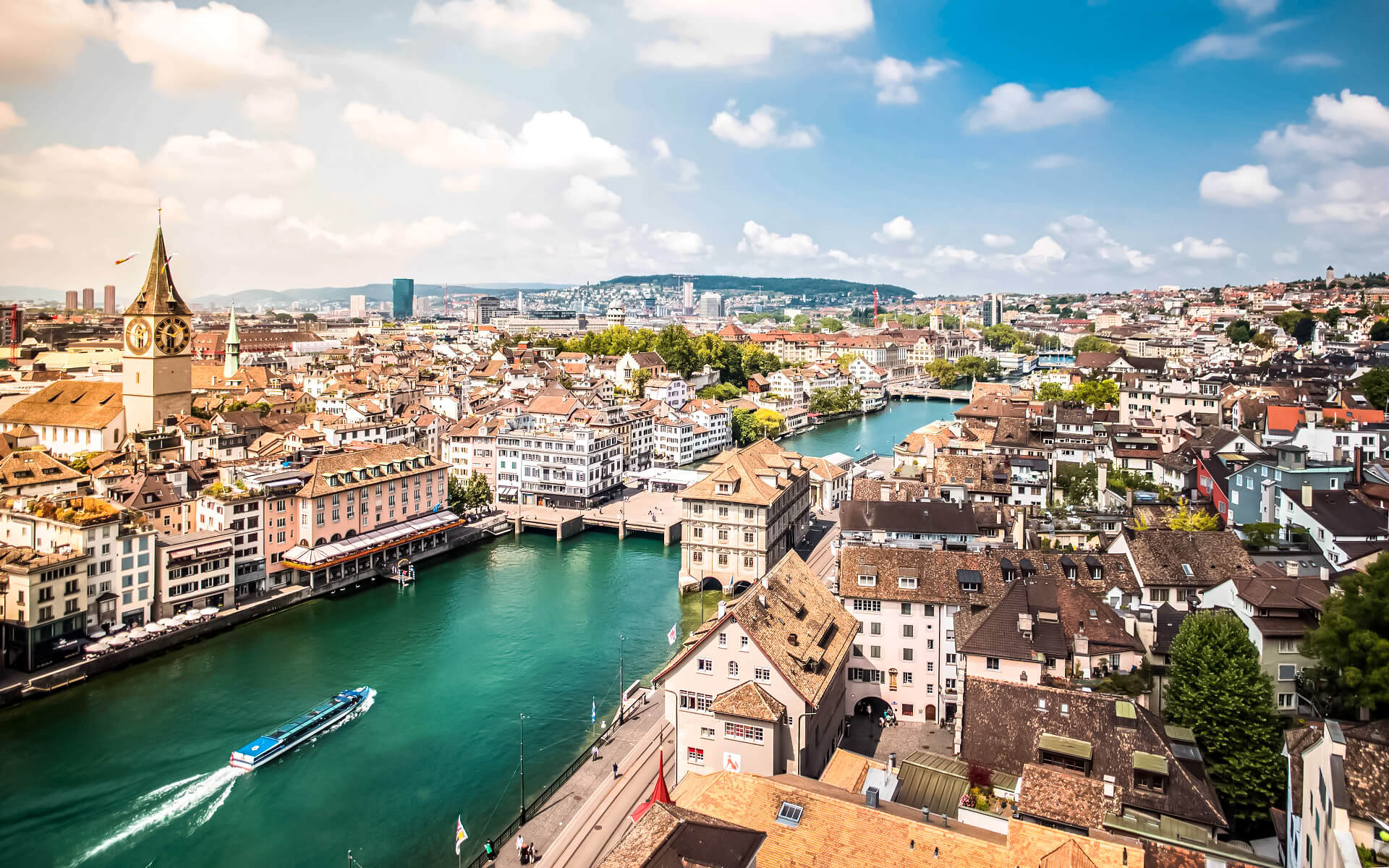[lwptoc]
Zürich is Switzerland’s biggest city and the seat of the canton of Zürich. It is situated near the northwestern extremity of Lake Zürich in north-central Switzerland. The municipality has a population of around 400,028 people, the urban agglomeration has 1.315 million people, and the Zurich metropolitan region has 1.83 million people. Zürich serves as a transportation center for trains, roads, and air travel. Both the airport and the railway station in Zürich are the biggest and busiest in the nation.
Zürich, which has been permanently populated for roughly 2000 years, has a history that dates back to the Romans, who named it Turicum in 15 BC. However, early civilizations going back more than 6400 years have been discovered. During the Middle Ages, Zürich achieved the autonomous and privileged position of imperial immediacy, and under the leadership of Ulrich Zwingli, it became a main center of the Protestant Reformation in Europe in 1519.
Zürich’s official language is (the Swiss variation of Standard) German, although the major spoken language is an Alemannic Swiss German dialect.
Despite its small population, Zürich is a prominent worldwide metropolis and one of the world’s top financial centers. The city is home to several financial institutions and banking behemoths. The majority of Switzerland’s R&D centers are centered in Zürich, and the low tax rates entice foreign corporations to establish their headquarters there.
In Monocle’s 2012 “Quality of Life Survey,” Zürich was named #1 among the best 25 cities in the world to “build a base inside.” Several studies conducted between 2006 and 2008 rated Zürich the city with the finest quality of life in the world, as well as the richest city in Europe. According to the Economist Intelligence Unit’s Global Liveability Ranking, Zürich is one of the world’s top ten most liveable cities.
The city is home to several museums and art galleries, including the Swiss National Museum and the Kunsthaus. The Schauspielhaus Zürich is a major theatre in the German-speaking world.


